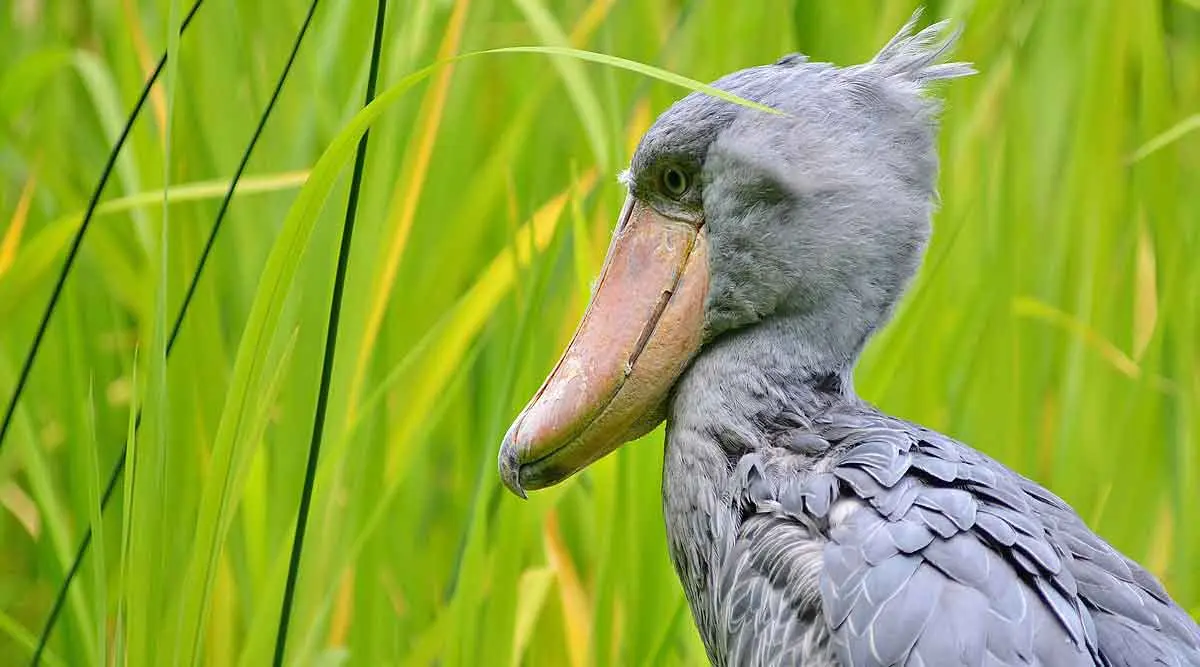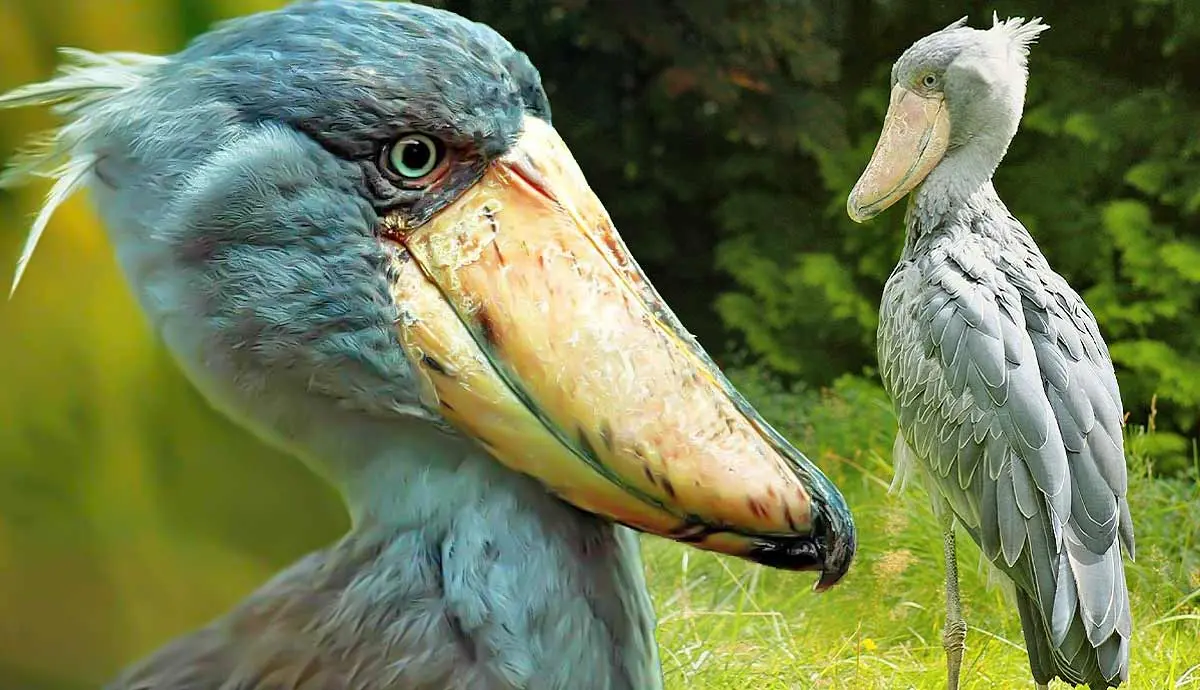The shoebill may look grumpy or even frightening to some, but this bird is very fascinating on its own. With its menacing glare and characteristic beak, this bird stands out from all the rest. Read on to learn more about this unique animal!
1. It is Named After its Beak

The shoebill, also known as the “whale-headed stork” or “shoebill stork” (you will read later why shoebills are not true storks), is named after the shape of its beak. It somewhat resembles a Dutch clog due to its broad shape and pointed appearance. The shoebill sports the third longest beak out of any bird living today. Due to its bizarre appearance and seemingly intimidating stare, the shoebill has some internet presence, with images and memes of this bird often circulating on social media platforms. It is also highly desired by birdwatchers visiting or living in Africa.
Despite the mean looks, shoebills are often easily approached and are reported to be friendly toward humans. This doesn't mean that you should approach and interact with wild animals, though, and this includes shoebills!
2. Shoebills Can Sit Still for Hours on End

The shoebill is known for its slow movements; it can even stand seemingly motionless for hours. Standing still helps this bird search for movements of fish underwater without scaring them off. However, when a fish finally surfaces, the shoebill suddenly lunges at a fast speed (known as “collapsing”) to seize prey with its bill. It sometimes decapitates its prey with its sharp beak before swallowing it whole.
Though it usually eats fish, shoebills have also been known to feast on other animals, such as snakes, frogs, and even baby crocodiles. Shoebills can be found in marshes and swamps of Eastern Africa. These birds cannot hunt efficiently in deep water; therefore, they are found in shallower areas. This species prefers wetlands containing papyrus plants.
It is suggested that shoebills may benefit from the presence of hippos in their habitat. When a hippo forages for aquatic plants, its movements frighten fish, aiding the shoebill in catching prey.
3. The Shoebill is Not a Stork

Due to its stork-like appearance, it was once believed that the shoebill was closely related to storks. Recent research has shown, however that shoebills are closer to pelicans genetically. Another close relative of the shoebill is the Hamerkop, a brown bird that can also be found in the same habitats. Along with pelicans, hamerkops, and herons, the shoebill belongs in the order of Pelecaniformes. Meanwhile, storks belong in the order Ciconiiformes instead.
4. It Makes Shotgun-Like Noises

The shoebill is usually a quiet animal, rarely making a sound when unnecessary. However, these birds are known to make sounds similar to a firing machine gun. It creates them by rapidly clattering its beak. Shoebills clatter their beaks to attract mates, greet each other, and ward off intruders from their territories. This bird may also produce a “mooing” sound as well. Begging chicks utter sounds that some compare to that of a human hiccupping.
Shoebills don't need to vocalize often, being solitary animals. Although they prefer to be alone, they form breeding pairs, and these birds will forage separately at opposite ends of their territory. Chicks will take this a step further; though a nest may contain up to three eggs, usually only one will survive to adulthood. The strongest chick (usually the oldest) lives, while the weaker siblings are either killed or left to die.
5. Shoebills Need Our Help

The Shoebill isn’t currently listed as an endangered species; however, it is listed as Vulnerable by the IUCN Red List as of 2018. It could become endangered in the future if its population continues to decline. Only around three thousand animals are estimated to be left in the wild. The shoebill’s habitat is being destroyed by a multitude of factors: oil pollution, dam construction, agriculture conversion, and political unrest, amongst others. Droughts induced by climate change also threaten the shoebill's future survival.
Habitats are often cleared out by burning which destroys nests and kills shoebill chicks. Their nests are also sometimes trampled by cattle grazing in swampy areas. Poaching poses another threat to the shoebill's existence. It is hunted for its meat and eggs, and live shoebill chicks are highly sought after in the illegal bird trade. The shoebill is also persecuted in some areas due to superstition, as some cultures believe this bird to be a bad omen.
Though kept in some zoos around the world, shoebills rarely breed in captivity. Very few zoos have successfully bred this species. Despite this challenge, conservation organizations are working to help protect shoebills and their habitats. Programs have been established to help raise awareness and encourage community engagement among those living in shoebill-populated areas. For example, local fishermen in Zambia have been hired as anti-poaching guards to monitor and protect this species.
You can help shoebills by raising awareness of this little-known species to your friends and family. You can also donate to organizations working to protect and research this mysterious animal.

